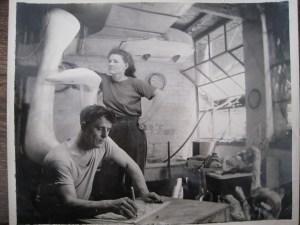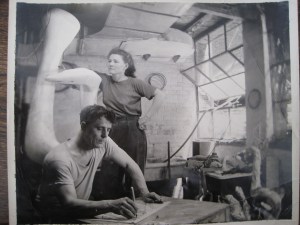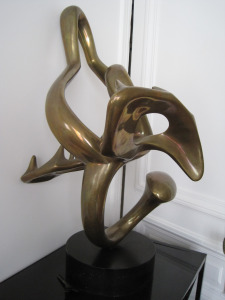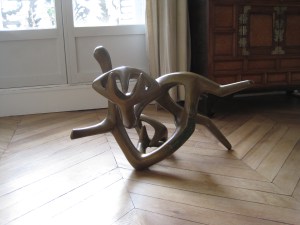For the past year, I have been working as a research assistant here at LACMA, helping the curator Ilene Susan Fort with the preparations for a major exhibition called In Wonderland: the Surrealist Adventures of Women Artists in Mexico and the United States. This show, opening in January of 2012, will showcase the work of many well-known artists such as Frida Kahlo, but also introduce many important women who have not achieved such international renown. One of the most enjoyable aspects of working on this project has been tracking down key paintings and sculptures by these lesser-known artists and learning about their extraordinary lives.
This past June, I was lucky enough to travel to Paris in the pursuit of information on one such artist, Helen Phillips. Born in San Francisco in 1913, Phillips won a travel scholarship to study art in Paris in 1936, where she fell in love with the ideals and practices of the surrealist movement. Phillips also fell in love with the artist William Stanley Hayter, director of the Atelier 17, a print studio which served as an important center of experimentation for many surrealist artists. In the 1940s and 1950s, Phillips created anthropomorphic forms in bronze, and we are eager to include a few of these in show.
In Paris I went to stay with Phillips’ daughter-in-law, the Italian curator Carla Esposito Hayter, whose apartment in Saint-Germain-des-Prés is right down the street from the famous Café Les Deux Magots. With regular doses of espresso and pain au chocolat, we spent long hours happily digging through Phillips’ documents from throughout her career, including wonderful photographs such as this of Phillips and Hayter in their studio.
We also measured and photographed many examples of Phillips’ work, lugging bronze sculptures onto a bathroom scale (it is important to have a weight estimate for shipping purposes). Phillip’s best-known sculpture is a work in Carla’s apartment called Metamorphose (1946) a good example of the artist’s concern with forms in perpetual motion and transformation.
As Carla and I were looking through a batch of old photographs of Phillips’ sculptures, she suddenly realized that one of the works was in corner of the bedroom where I was staying. Neither she nor I had given much attention to the piece, which seemed sort of flat and nondescript. However, as we carried the bronze out into the living room and set it in the proper position according to the old photograph, a fully-realized work came to life.
Although the piece is romantically called Amants Novices (Inexperienced Lovers), its sharp “teeth” and tangled limbs give the sculpture a slightly menacing quality that may relate to the surrealist interest in symbols of violent female sexuality, such as the Praying Mantis. Carla and I were very excited about our discovery, and it may turn out that this sculpture is perfect for a show about the ways in which women artists responded to surrealist concepts.
Terri Geis,
Research Assistant, American Art






